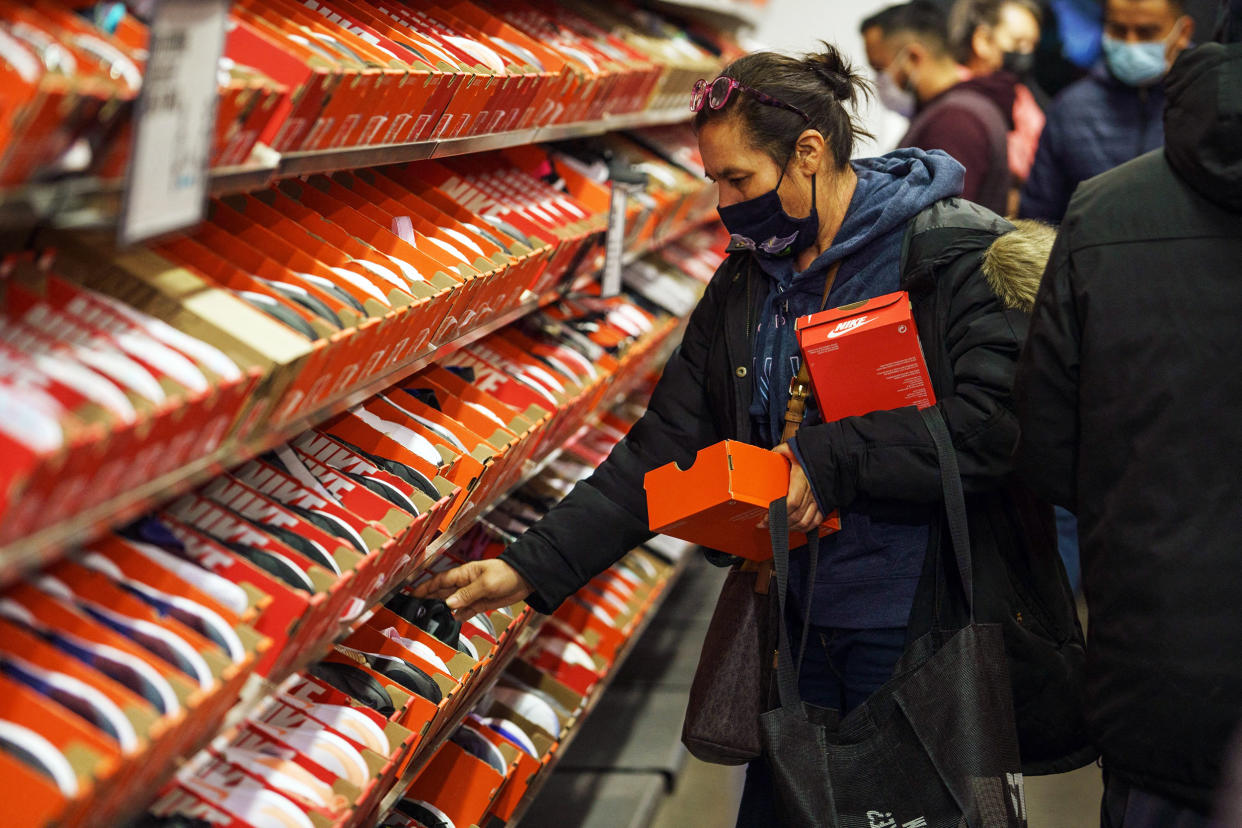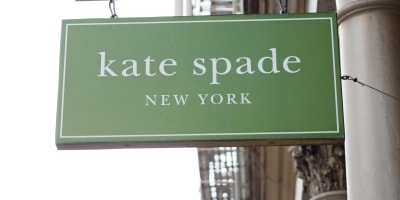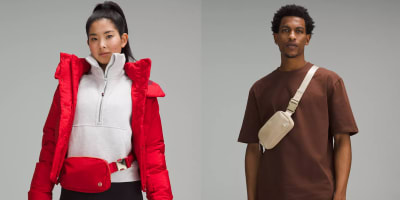Omicron and inflation did not stop shoppers on Black Friday and Cyber Monday
Holiday shoppers streamed back into stores over Black Friday weekend, in a sign that consumers are eager to return to in-person shopping — despite higher prices, lower discounts and a new Covid-19 variant — according to industry analysts.
Nearly 180 million shoppers spent an average of $301 each over Black Friday and Cyber Monday weekend, according to an annual survey released Tuesday by the National Retail Federation trade group and data analytics firm Prosper Insights & Analytics.
Retailers saw about 105 million shoppers visiting stores over the weekend, compared to just 92 million last year. The overall number of online shoppers decreased to a total of roughly 128 million from 145 million last year.
“We all enjoy the tradition of enjoying things in person and in-store shopping as a symbolic kick off to holiday season — and [shoppers] missed that in many cases last year,” Matthew Shay, NRF's president and CEO, told reporters in a press call Tuesday.
“There is general fatigue,” he added. “People are tired of doing things remotely and on stream and doing things virtually. They would like to be together doing those things in person."
About 46 percent of U.S. consumers shopped online over the weekend, according to the NRF. Roughly 44 percent of people shopped at department stores, 39 percent shopped at grocery stores, 32 percent at clothing retailers, 28 percent at electronics stores and 26 percent at discount stores, the group reported.
Beauty stores Ulta and Sephora saw traffic soar over the weekend, according to location analytics firm Placer.Ai. Ulta’s foot traffic increased 42 percent from last year, while Sephora's increased by roughly 98 percent, it found. Shoppers returned to discount stores including T.J. Maxx and Ross, which all saw traffic increase by more than 30 percent. More people shopped at malls this year compared to last year, but shopping centers are still losing foot traffic compared to 2019, according to Placer. Visits to indoor malls increased by 83 percent from 2020, but fell by about 9 percent compared to 2019, according to the firm’s early mall traffic data.

Digital sales between Thanksgiving Day and Cyber Monday drove a total of $33.9 billion in online spending, down 1.4 percent from last year, according to Adobe Digital Economy Index. Black Friday online sales fell to $8.9 billion from $9 billion and Thanksgiving Day sales stayed flat from last year, at $5.1 billion.
“Consumers are buying earlier, and they’re buying heavier earlier,” Patrick Brown, vice president of growth marketing and insights with Adobe, told NBC News. “So we think this is a result of consumers heeding the warnings about outages.”
Throughout November, consumers have already spent $109.8 billion online, an increase of about 12 percent from last year, according to Adobe. The full holiday shopping season is estimated to hit $207 billion, a 10 percent increase from last year, according to Adobe.
While supply chain challenges have dominated headlines in the last several weeks, about 70 percent of consumers surveyed by the NRF said they are confident they will find the products and supplies they need. They added that while they may not find their first choice in products, they will find an alternative product.
“The supply chain thing is somewhat overblown ... There are still things [shoppers] can get,” said Greg Maloney, president and CEO of retail with the commercial real estate services company JLL. “They’re not rushing out to get something unless it’s a hot toy or one electronic or something, but beyond that it’s not a big thing for a lot of people.”
However, out-of-stock messages are still high. On Cyber Monday, out-of-stock messages were up 8 percent compared to the week before. Through November, out-of-stock messages were up 169 percent compared to pre-pandemic levels, according to Adobe.
A mix of pandemic-driven supply chain slowdowns and higher consumer demand for goods has led retailers to drive down promotions into the holiday shopping season. The average selling price over Black Friday weekend was up 11 percent compared to last year and the average discount was down 26 percent, according to Salesforce. Partially a result of decreased promotions and price inflation, shopping cart totals increased even as total transactions decreased. Retail brands saw an average of 8 percent fewer purchases this Black Friday compared to last year, according to shopper analytics firm Bluecore.
More shoppers are turning to new installment payment services to manage their costlier holiday shopping carts, according to Adobe. On Cyber Monday, usage of "buy now, pay later" services saw a revenue jump of 21 percent from last year and orders up by about 1 percent from last year.
M.K. England, a shopper based in Scottsville, Virginia, told NBC News she started her holiday shopping in October this year because she was worried about shipping delays and product shortages.
“I’ve done a lot more in-person shopping this year, so shipping hasn’t been much of a concern,” she said. “There is only one thing I ordered that I’m not sure will get here in time.”
Over the course of the pandemic, she’s done the majority of her shopping online. But this holiday season, she’s looking to support local brick-and-mortar businesses.
“I hate crowds but this year with everything going on I thought it was safer to get some things in person,” she said. “And with the effects of the pandemic, I wanted to support local businesses even more.”






